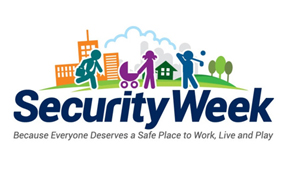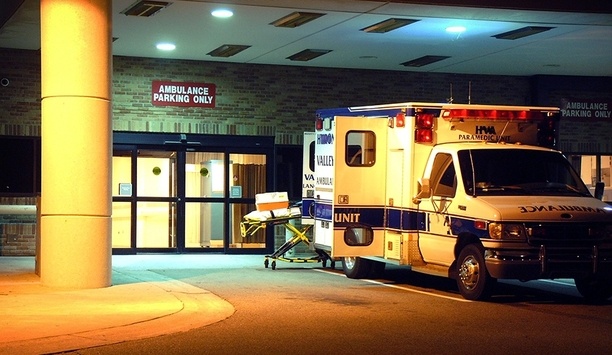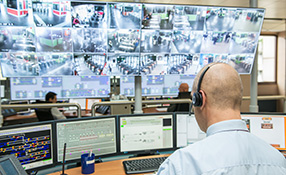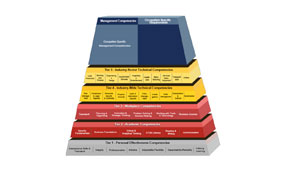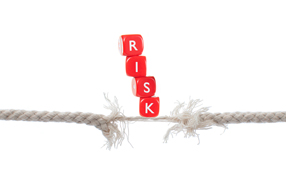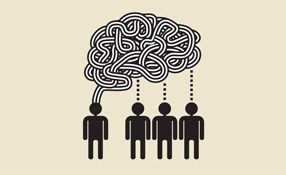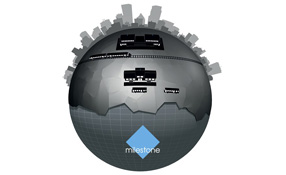 |
| Supply chain risk management involves identifying and dealing with supply chain uncertainties that pose a threat to business continuity |
Today’s complex world needs risk managers, business people that think about the bad things that might happen and lay plans to eliminate or at least mitigate those risks. This article explains the need to identify and respond to risks involved in a supply chain. Manufacturers should make efforts and develop strategies to enhance supply chain security in order to run a business smoothly and maintain a competitive edge over others.
Importance Of Security Departments
Generally, risk managers focus on financial risks. They make sure that companies have the proper insurance coverage. They also develop mitigation programs that reduce risks — and insurance premiums.
Security departments practice risk management, too. Security directors assess the physical risks of vandalism, crime, accidents and natural disasters faced by an organization and develop strategies that use officers supported by technology to deal with operational risks.
The skills required to create and manage physical security programs enable security departments to take on a relatively new risk management discipline: supply chain risk management (SCRM).
According to the ANSI standard on SCRM, which was developed by ASIS just last year, supply chain risk management involves identifying and dealing with supply chain uncertainties that pose a threat to business continuity.
Suppose you manufacture pharmaceuticals and an earthquake knocks out a plant that makes a key ingredient for you. Do you have another source? If not, have you laid in an emergency supply?
“Supply chain security begins by identifying existential threats,” says Dennis Blass, CPP, director of safety and security at Children’s of Alabama Hospital in Birmingham, Ala. “What can put you out of business?
How Do You Identify Supply Chain Threats?
Co-chair of the ASIS Supply Chain and Transportation Security Council and a member of the ANSI SCRM Standard Working Committee, Blass recommends beginning with the people that do the value-creating work for a company.
"Supply chain security begins by identifying existential threats. What can put you out of business?" |
“In a manufacturing company, I would start with the operations people, the ones that make the products,” Blass says. “They know the business better than anyone else. They can tell you what supply chain failures can shut down the manufacturing lines.”
“In a service company, the place to start is the labor that provides the services,” Blass says. “What would cause them to sit idle? Human resources departments are important to a service company supply chain, too. What skills and knowledge does an ideal service person possess? How hard is it to find people like that?”
Suppliers’ Role In Risk Assessment
Next come the support departments. What do the various managers worry about in the supply chain? What are the pinch points that can slow the company down or bring it to a halt?
All critical suppliers need to be involved in the assessment, continues Blass. In a complicated supply chain, you need to find the suppliers that are causing the problem. It isn’t always straightforward.
Suppose your operations people report that the line is regularly shut down because a critical manufacturing part continually arrives late. What causes that? Is it your transportation provider or the supplier’s transportation provider? Perhaps it is the supplier’s manufacturing system or a company that supplies your supplier. Once you identify the cause of a serious continuing risk, you can develop solutions.
The ANSI Standard recommends thinking about each department and supplier this way: Start with the leaders to identify critical problems. Prioritize those. Start with the most critical. Develop a business case for solving the problem — don’t spend $1,000 to fix a $200 problem. Manage the changes required by the solution you develop and then improve the solution continuously.
Do this again and again for the next most critical problems on the list. Keep it up. Your company will improve it product, service, brand and bottom line.
To be sure, it is hard work. “Organizing and carrying out a supply chain risk management effort is a massive job,” Blass says. “The most important step, though, is to identify critical, potential problems and act to eliminate them or mitigate their effects. I believe that problems subject to Murphy’s Law always send warnings before going wrong. Leaders must see those warnings and act beforehand.”


